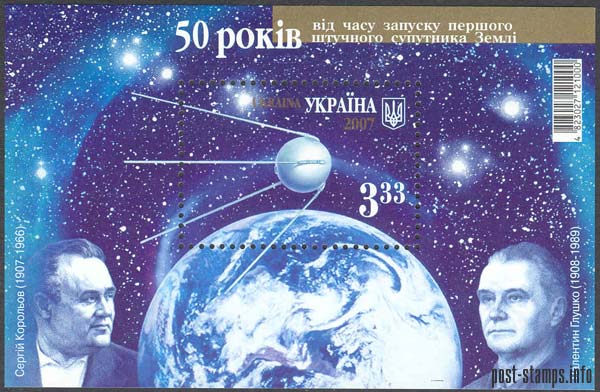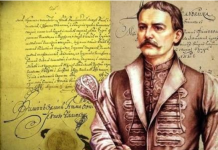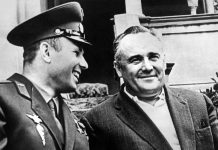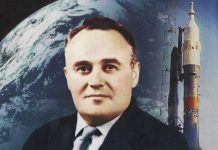A Soviet newspaper of early October, 1957: “On 4 October 1957 at 10:28 p.m. Moscow time a violent flash of light illuminated the night over the steppe and the rocket lifted off with a roar. Its flame gradually diminished and soon became indistinguishable against the background of heavenly bodies. Newton calculated the first cosmic velocity, and now three centuries later a creation of the human mind and hands had achieved it for the first time…10 After the satellite separated from the last stage of the rocket the transmitters began to operate and the celebrated signals “beep, beep, beep,” flew over the airwaves. Observations during the first orbital passes showed that the satellite had been inserted in an orbit with an inclination of 65º6′, an altitude of 228 kilometers at its perigee, and a maximum distance from the Earth’s surface of 947 kilometers. It took 96 minutes 10.2 seconds to complete each orbital pass around the Earth.”
Typically, the Hero of Socialist Labor award was the most prestigious civilian honor. The leading Sputnik designers (Korolev, Glushko, Pilyugin, Ryazanskiy, Kuznetsov, Barmin, and Mishin) were among those who received the award in 1956 for the development of the R-5M nuclear-tipped strategic missile. As a result, in 1957, the previous awardees were not given a second Hero of Socialist Labor (which was an extremely rare honor) but instead given the Lenin Prize. Three of Korolev’s leading deputies (Bushuyev, Okhapkin, and Voskresenskiy) were the only ones awarded the Hero of Socialist Labor for Sputnik.
“In cooperation with Valentin Glushko, Sergei Korolev managed to launch the first Sputnik on October 4, 1957. The effect of the event was so huge, that the Nobel Committee was ready to award unplanned prizes in 1957. The Kremlin was asked who the sputnik’s creators were. Both Korolev and Glushko would have been Nobel Prize winners. Two Ukrainians – two Nobel Prize holders it would and should have been! But Nikita Khrushchev pompously answered that the whole Soviet nation was the creator of the breakthrough. Not many people know that the actual design of the Sputnik was very simple and took only one month to build. It consisted of a polished metal sphere, a transmitter, some thermal measuring instruments, plus batteries and Sergei Korolev assembled it alone with his hands barely meeting the deadline. It was this shining object assembled by the great Ukrainian Korolev that would inspire a young coalminer’s son in the United States to become a rocket engineer in the famous American movie “October Sky“. (The excerpt is taken from the “Ukraine & the United States” e-book). Ukrainian Who Opened Space to Humankind >










